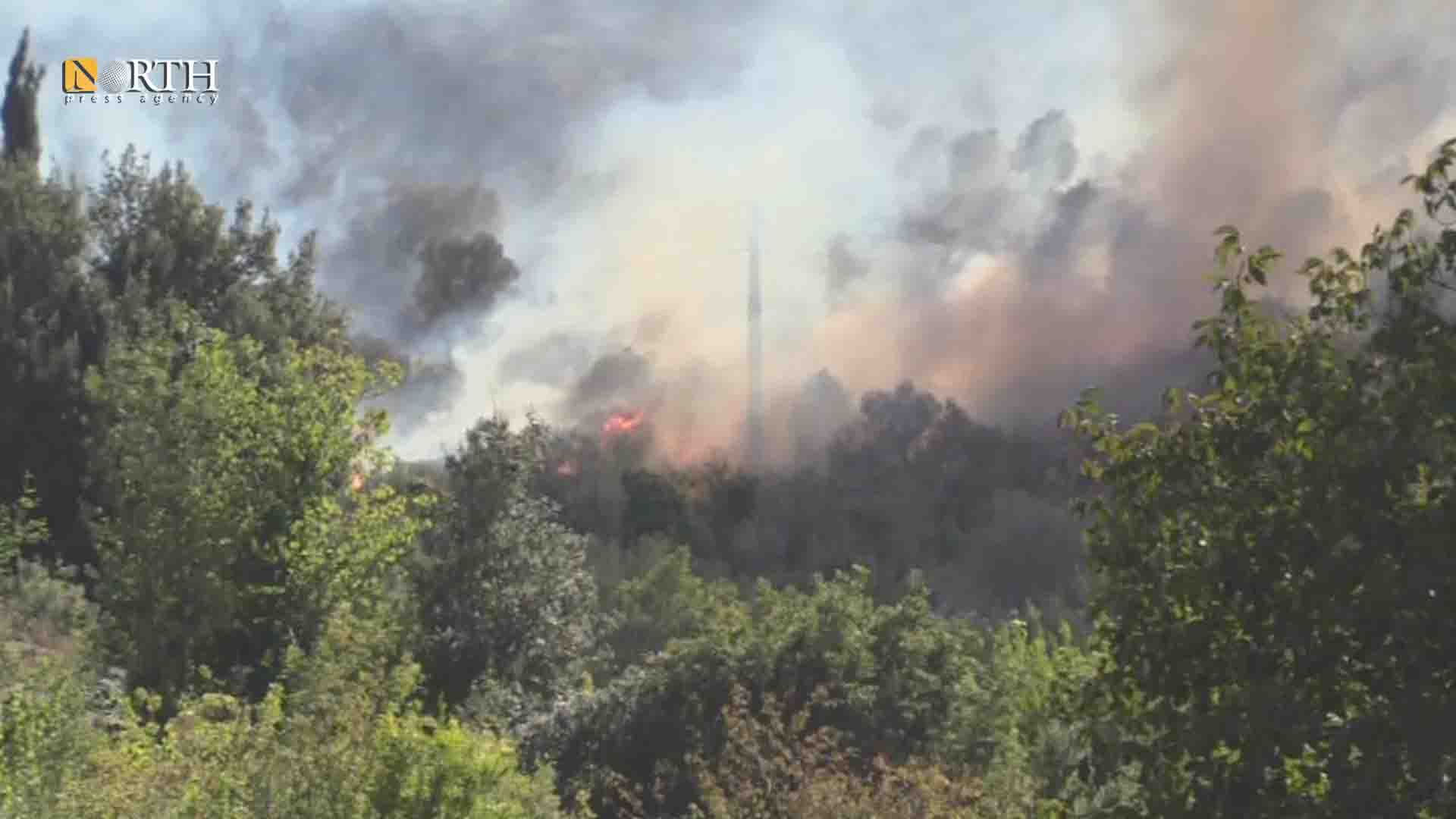LATAKIA, Syria (North Press) – Farmers in the coastal mountain regions of Syria’s Latakia, Tartus, and Homs were greatly affected by recent fires, which burned 2.1 million fruit trees and thousands of hectares of agricultural land.
An economist also suggested that the consequences of losses on the national economy could be compensated. Officials announced that aid to the affected villages would be in the form of service and development projects and the opening of roads for fire trucks to reach them.
Lost income
Laith al-Rifai, a farmer from Latakia countryside, told North Press that he lost three hectares planted with more than 1,000 olive trees.
“It was a good season, but we didn’t get a share,” al-Rifai said.
Sameer Abu Qassim, a farmer in the village of al-Malwa in the Tartus countryside, said he lost 60 olive trees, which were his only source of livelihood.
The area of agricultural land damaged by the fires in al-Malwa was about 10 hectares, and the forest area was about 12 hectares, according to farmers from the village.
“The burned area amounted to 8,900 hectares of fruit trees and 5,500 hectares of forest trees, and there are 2.1 million fruit trees that have been damaged,” Agriculture Minister Mohamed Hassan Qatana told al-Watan newspaper on Tuesday.
”The recent fires will affect the prices of olives, olive oil, and citrus this season.” Osama Kaziz, a member of the Committee of Traders and Exporters of the Hal Market told al-Watan.
Damage for years
”The losses from the fire hit farmers directly, and trees were the only livelihood for many families who were living in difficult living conditions,” economist Dr. Shadi Ahmed told North Press.
“This loss will exacerbate the difficulties of living, as these crops have helped to bridge the huge gap between the needs and material resources of these families,” he added.
In October, several areas of Latakia, Tartus, and Homs witnessed fires that affected large areas of forests and agricultural land.
In addition to the losses of crops, fires in Tartus countryside resulted in 10 cases of smoke inhalation, while Qardaha District in Latakia countryside witnessed evacuations of patients in the city hospital.
Unofficial statistics indicate the loss of about three million forest trees, 1.5 million olive trees, and nearly three million citrus trees, in addition to many other crops.
”The rehabilitation of burned land includes higher investment costs than unburned land, which would lead to higher production costs and would reflect a higher price of the product,” according to Dr. Ahmed.
However, Ahmed said the fire would not have a “catastrophic impact” on the entire national economy, arguing that the number of trees burned was low compared to the number of trees in the whole of Syria. “The damage to the national economy in the numeral concept is very little,” he said, adding that “the 1.5 million burned olive trees make up less than one percent of Syria’s 110 million olive trees.”
Developmental compensation
According to the Syrian government’s official news agency SANA, Syrian President Bashar Assad has allocated 2.37 million Syrian pounds to carry out service projects to compensate those affected by the fires in Latakia and Tartus.
Mohammed Mustafa, a member of the Tartus Governorate Council, told North Press that assistance is scheduled to begin.
”The aid would be through development projects in the affected villages, and we would open fire roads on agricultural land to make it easily accessible to firetrucks in the event of an outbreak of new fires,” he added.
”The environmental impact of fires was more difficult, because in Syria we did not have a clear strategy to deal with environmental disasters, and despite the great efforts that were made, the absence of a disaster management strategy was evident,” Dr. Ahmed said.
“We need such a ministry or body to deal with the environmental impacts of these fires,” he added.

